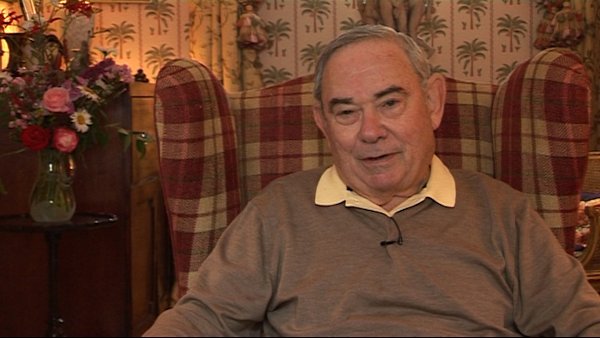NEXT STORY

Our $75 laboratory
RELATED STORIES

NEXT STORY

Our $75 laboratory
RELATED STORIES


|
Views | Duration | |
|---|---|---|---|
| 11. Life in the army | 103 | 04:14 | |
| 12. First encounter with microbiology | 100 | 04:19 | |
| 13. Early days at Merck | 98 | 03:40 | |
| 14. Going back to university | 92 | 02:39 | |
| 15. Joining the microbiology graduate team at the University of... | 88 | 03:13 | |
| 16. A laboratory in need of modernization | 80 | 01:56 | |
| 17. Our $75 laboratory | 80 | 03:10 | |
| 18. Learning about cell culture | 98 | 01:31 | |
| 19. The transition from cells to bacteria | 80 | 00:46 | |
| 20. The Wistar Institute | 135 | 01:24 |


Warren Steinbring did something that then had a fantastic influence on my career. For reasons unknown to me, he decided to take a course at the Mary Jane Bassett Hospital in New York State. But the first course in cell culture... At that time it was called tissue culture, which to some... large extent was a misnomer, because you actually don't culture tissues, that's rarely done, you culture... cells, that is, the cells that compose tissues. So Warren took this course and by this time Frank Kapral and I were disgusted with the primitive laboratory conditions that we had. And they were primitive, the building was from the late 18th... 19th century and the laboratory facilities were crude, almost antique. And since we had to work... work using what's called aseptic technique, that is, to work with the organism of interest and to prevent the contamination of that organism in the vessels that one was using with other microorganisms, so you had to know what's called sterile technique, how to work with a Bunsen burner, to sterilise instruments and the mouths of the containers, and so that was all learned. But in these primitive conditions that we had in this laboratory, it was very difficult and we needed to redesign the laboratory such that it would improve our aseptic technique. This happened to... We happened to realise this at the beginning of our first summer as students, while Warren was away taking this course in cell culture.
Leonard Hayflick (b. 1928), the recipient of several research prizes and awards, including the 1991 Sandoz Prize for Gerontological Research, is known for his research in cell biology, virus vaccine development, and mycoplasmology. He also has studied the ageing process for more than thirty years. Hayflick is known for discovering that human cells divide for a limited number of times in vitro (refuting the contention by Alexis Carrel that normal body cells are immortal), which is known as the Hayflick limit, as well as developing the first normal human diploid cell strains for studies on human ageing and for research use throughout the world. He also made the first oral polio vaccine produced in a continuously propogated cell strain - work which contributed to significant virus vaccine development.
Title: A laboratory in need of modernization
Listeners: Christopher Sykes
Christopher Sykes is a London-based television producer and director who has made a number of documentary films for BBC TV, Channel 4 and PBS.
Tags: Mary Imogene Bassett Hospital, Warren Stinebring, Frank E Kapral
Duration: 1 minute, 56 seconds
Date story recorded: July 2011
Date story went live: 08 August 2012